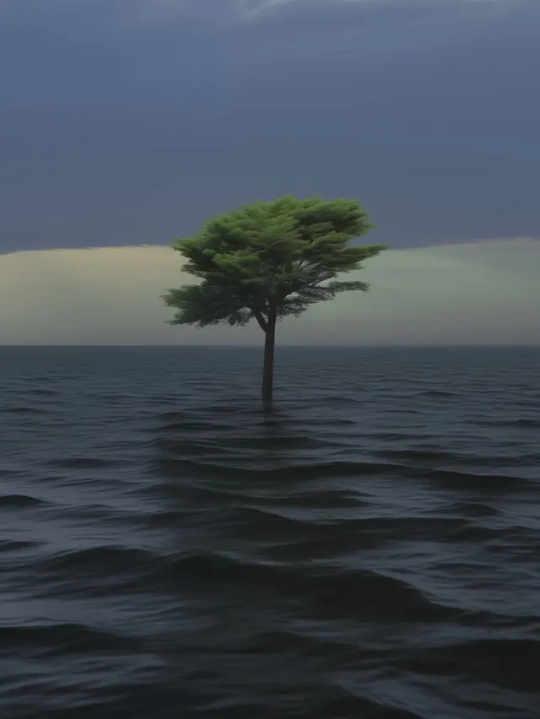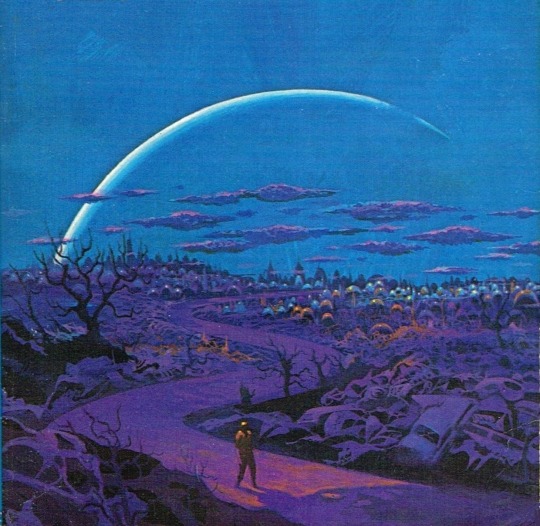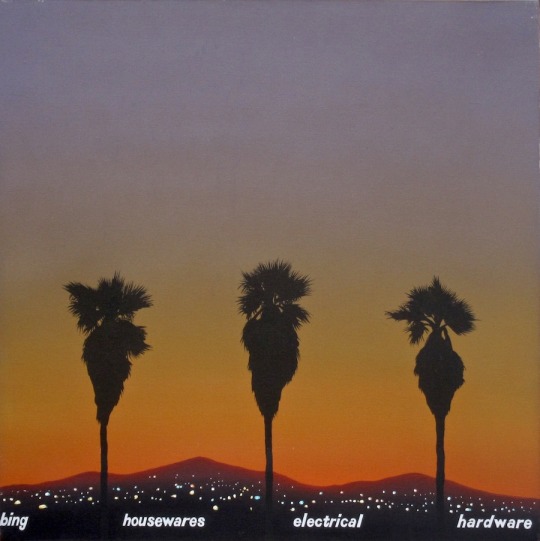#Format:
Explore tagged Tumblr posts
Text
Helmet - Milquetoast
#Helmet#Unsung: The Best Of Helmet (1991-1997)#Milquetoast#Label:#Interscope Records – B0000560-02#Format:#CD#Compilation#Enhanced#Country:#US#Released:#2004#Genre:#Rock#Style:#Alternative Rock#Post-Hardcore
16 notes
·
View notes
Link
Spires of the Infinite Sky by s0mmerspr0ssen, PapySanzo Ship: Merlin/Arthur, Gwen/Lancelot, Morgana/Gwaine Rating: Explicit Warnings: No archive warnings apply Major tags: Alternate Universe - Science Fiction, Space Opera, Secret Identity, Merlin's Magic Revealed Summary: Arthur Pendragon, princeps of the starship Caliburn, leads his crew on a mission through contested deep space, where tensions with the enemy Draig are rising. As war looms, Arthur struggles with the weight of his father’s expectations, worrying not only about the safety of his crew but that of all of ALBION. Amid ever growing pressure and rising doubts over their mission, Arthur must also deal with his growing feelings for Merlin Wyllt, the Caliburn’s new medic and a firm defender of the Draig, who insists there can be peace. Is he right?
#bbc merlin#merlin bingo#participant reblog#s0mmerspr0ssen#rating: e#ship: merlin/arthur#format: fic
7 notes
·
View notes
Quote
My fave thing about when I post about ADHD is that when I post about ADHD in text format on tumblr no one reads it but the moment it's a screenshot of a tweet of the same thing y'all are ALL OVER IT, is this an adhd thing ALSO? lmao no boring text only colorful screenshot samesies
pls reblog and share in tags/ body why lmao
12 notes
·
View notes
Video
.I was ashamed everyone could see I was a rootless, lonesome, crying tree par Herr Benini Via Flickr : bayern.20 kiev.88 analog. feathered sun . ocean tree . INSTAGRAM
#bayern#frost#baum#tree#albero#land#kiev 88#analog#6x6#120#medium format#kodak#kodak portra 400#flickr
0 notes
Text
A neon sign identified by JWST gives clue to planet formation - Technology Org
New Post has been published on https://thedigitalinsider.com/a-neon-sign-identified-by-jwst-gives-clue-to-planet-formation-technology-org/
A neon sign identified by JWST gives clue to planet formation - Technology Org
The winds that help to form planets in the gaseous discs of early solar systems have been imaged for the first time by the James Webb Space Telescope (JWST) using the noble gases neon and argon.
Planetary systems like our Solar System seem to contain more rocky objects than gas-rich ones. Around our sun, these include the inner planets, the asteroid belt and the Kuiper belt. But scientists have known for a long time that planet-forming discs start with 100 times more mass in gas than in solids, which leads to a pressing question; when and how does most of the gas leave the disc/system?
JWST is helping scientists uncover how planets form, by advancing understanding of their birthplaces, the circumstellar discs surrounding young stars. In a new study published in the Astronomical Journal, a team of scientists including those from the University of Leicester, the University of Cambridge and led by the University of Arizona, image for the first time an old planet-forming disc (still very young relative to the Sun) which is actively dispersing its gas content.
Knowing when the gas disperses is important as it constrains the time that is left for nascent planets to consume the gas from their surroundings.
During the very early stages of planetary system formation, planets coalesce in a spinning disc of gas and tiny dust around the young star. These particles clump together, building up into bigger and bigger chunks called planetesimals. Over time, these planetesimals collide and stick together, eventually forming planets. The type, size, and location of planets that form depend on the amount of material available and how long it remains in the disc. So, the outcome of planet formation depends on the evolution and dispersal of the disc.
At the heart of this discovery is the observation of T Cha, a young star (relative to the Sun) enveloped by an eroding disc notable for its vast dust gap, approximately 30 astronomical units in radius. For the first time, astronomers have imaged the dispersing gas (aka winds) using the four lines of the noble gases neon (Ne) and argon (Ar), one of which is the first detection in a planet-forming disc. The images of [Ne II] show that the wind is coming from an extended region of the disc. The team is also interested in knowing how this process takes place, so they can better understand the history and impact on our solar system.
Scientists have been trying to understand the mechanisms behind the winds in protoplanetary discs for over a decade. The observations by JWST represent a huge step-change in the data they have to work with, compared to previous data from ground-based telescopes.
“We first used neon to study planet-forming discs more than a decade ago, testing our computational simulations against data from Spitzer, and new observations we obtained with the ESO VLT,” said co-author Professor Richard Alexander from the University of Leicester. “We learned a lot, but those observations didn’t allow us to measure how much mass the discs were losing.
“The new JWST data are spectacular, and being able to resolve disc winds in images is something I never thought would be possible. With more observations like this still to come, JWST will enable us to understand young planetary systems as never before.”
“These winds could be driven either by high-energy stellar photons (the star’s light) or by the magnetic field that weaves the planet-forming disc,” said Naman Bajaj from the University of Arizona, the study’s lead author.
To differentiate between the two, the same group, this time led by Dr Andrew Sellek of Leiden Observatory and previously of the Institute of Astronomy at the University of Cambridge, performed simulations of the dispersal driven by stellar photons. They compare these simulations to the actual observations and find dispersal by high-energy stellar photons can explain the observations, and hence cannot be excluded as a possibility.
“The simultaneous measurement of all four lines by JWST proved crucial to pinning down the properties of the wind and helped us to demonstrate that significant amounts of gas are being dispersed,” said Sellek.
To put it into context, the researchers calculate that the mass dispersing every year is equivalent to that of the moon! These results will be published in a companion paper, currently under review at the Astronomical Journal.
The [Ne II] line was discovered towards several planet-forming discs in 2007 with the Spitzer Space Telescope and soon identified as a tracer of winds by team member Professor Ilaria Pascucci at the University of Arizona; this transformed research efforts focused on understanding disc gas dispersal. Now the discovery of spatially resolved [Ne II] – as well as the first detection of [Ar III] – using the James Webb Space Telescope, could become the next step towards transforming our understanding of this process.
The implications of these findings offer new insights into the complex interactions that lead to the dispersal of the gas and dust critical for planet formation. By understanding the mechanisms behind disc dispersal, scientists can better predict the timelines and environments conducive to the birth of planets. The team’s work demonstrates the power of JWST and sets a new path for exploring planet formation dynamics and the evolution of circumstellar discs.
Source: Cambridge University
You can offer your link to a page which is relevant to the topic of this post.
#ar#argon#Asteroid#Astronomy#Astronomy news#Building#change#content#data#detection#dust#dynamics#energy#Evolution#form#formation of planets#Fundamental physics news#gap#gas#heart#History#how#images#impact#insights#it#James Webb Space Telescope#jwst#LED#Light
0 notes
Photo

PORTO ROCHA
1K notes
·
View notes
Photo

🧀🥪🌶️🥭 The Ravening War portraits 🧀🥪🌶️🥭
patreon * twitch * shop
[ID: a series of digitally illustrated portraits showing - top left to bottom right - Bishop Raphaniel Charlock (an old radish man with a big red head and large white eyebrows & a scraggly beard. he wears green and gold robes with symbols of the bulb and he smirks at the viewer) Karna Solara (a skinny young chili pepper woman with wavy green hair, freckled light green skin with red blooms on her cheeks. she wears a chili pepper hood lined with small pepper seeds and stares cagily ahead) Thane Delissandro Katzon (a muscular young beef man with bright pinkish skin with small skin variations to resemble pastrami and dark burgundy hair. he wears a bread headress with a swirl of rye covering his ears and he looks ahead, optimistic and determined) Queen Amangeaux Epicée du Peche (a bright mango woman with orange skin, big red hair adorned with a green laurel, and sparkling green/gold makeup. she wears large gold hoop earrings and a high leafy collar) and Colin Provolone (a scraggly cheese man with waxy yellow skin and dark slicked back hair and patchy dark facial hair. he wears a muted, ratty blue bandana around his neck and raises a scarred brow at the viewer with a smirk) End ID.)
#trw#the ravening war#dimension 20#acoc#trw fanart#ttrpg#dnd#bishop raphaniel charlock#karna solara#thane delissandro katzon#queen amangeaux epicee du peche#colin provolone
2K notes
·
View notes
Photo

(vía Another America 50 by Phillip Toledano)
75 notes
·
View notes
Photo

One of my favorites by Paul Lehr, used as a 1971 cover to "Earth Abides," by George R. Stewart. It's also in my upcoming art book!
1K notes
·
View notes
Text
Helmet – Unsung
#Helmet#Unsung: The Best Of Helmet (1991-1997)#Unsung#Label:#Interscope Records – B0000560-02#Format:#CD#Compilation#Enhanced#Country:#US#Released:#2004#Genre:#Rock#Style:#Alternative Rock#Post-Hardcore
15 notes
·
View notes
Link
And A Song Someone Sings, Once Upon A December by TrebleMaker07 Ship: Merlin/Arthur Main Characters: Merlin, Arthur, Lancelot Rating: General audiences Warnings: Choose not to use archive warnings Major tags: Mutual Pining, Ballroom Dancing, Light Angst, Good Friend Lancelot (Merlin), Merlin is Bad at Feelings (Merlin) Summary: Have you heard? There's a rumor in London. Prince Arthur may be still alive. They say the King will pay a royal sum, to someone who can bring the prince back. Inspired by Anastasia (1997 20th Century Fox Movie)
#bbc merlin#merlin bingo#participant reblog#treblemaker07#rating: g#ship: merlin/arthur#cw: chose not to warn#format: fic
4 notes
·
View notes
Quote
もともとは10年ほど前にTumblrにすごくハマっていて。いろんな人をフォローしたらかっこいい写真や色が洪水のように出てきて、もう自分で絵を描かなくて良いじゃん、ってなったんです。それで何年も画像を集めていって、そこで集まった色のイメージやモチーフ、レンズの距離感など画面構成を抽象化して、いまの感覚にアウトプットしています。画像の持つ情報量というものが作品の影響になっていますね。
映画『きみの色』山田尚子監督×はくいきしろい対談。嫉妬し合うふたりが語る、色と光の表現|Tokyo Art Beat
156 notes
·
View notes
Photo










#thistension
XO, KITTY — 1.09 “SNAFU”
#xokittyedit#tatbilbedit#kdramaedit#netflixedit#wlwedit#xokittydaily#asiancentral#cinemapix#cinematv#filmtvcentral#pocfiction#smallscreensource#teendramaedit#wlwgif#kitty song covey#yuri han#xo kitty#anna cathcart#gia kim#~#inspiration: romantic.#dynamic: ff.
1K notes
·
View notes
Photo



No one wants to be here and no one wants to leave, Dave Smith (because)
111 notes
·
View notes
Photo

PORTO ROCHA
768 notes
·
View notes
